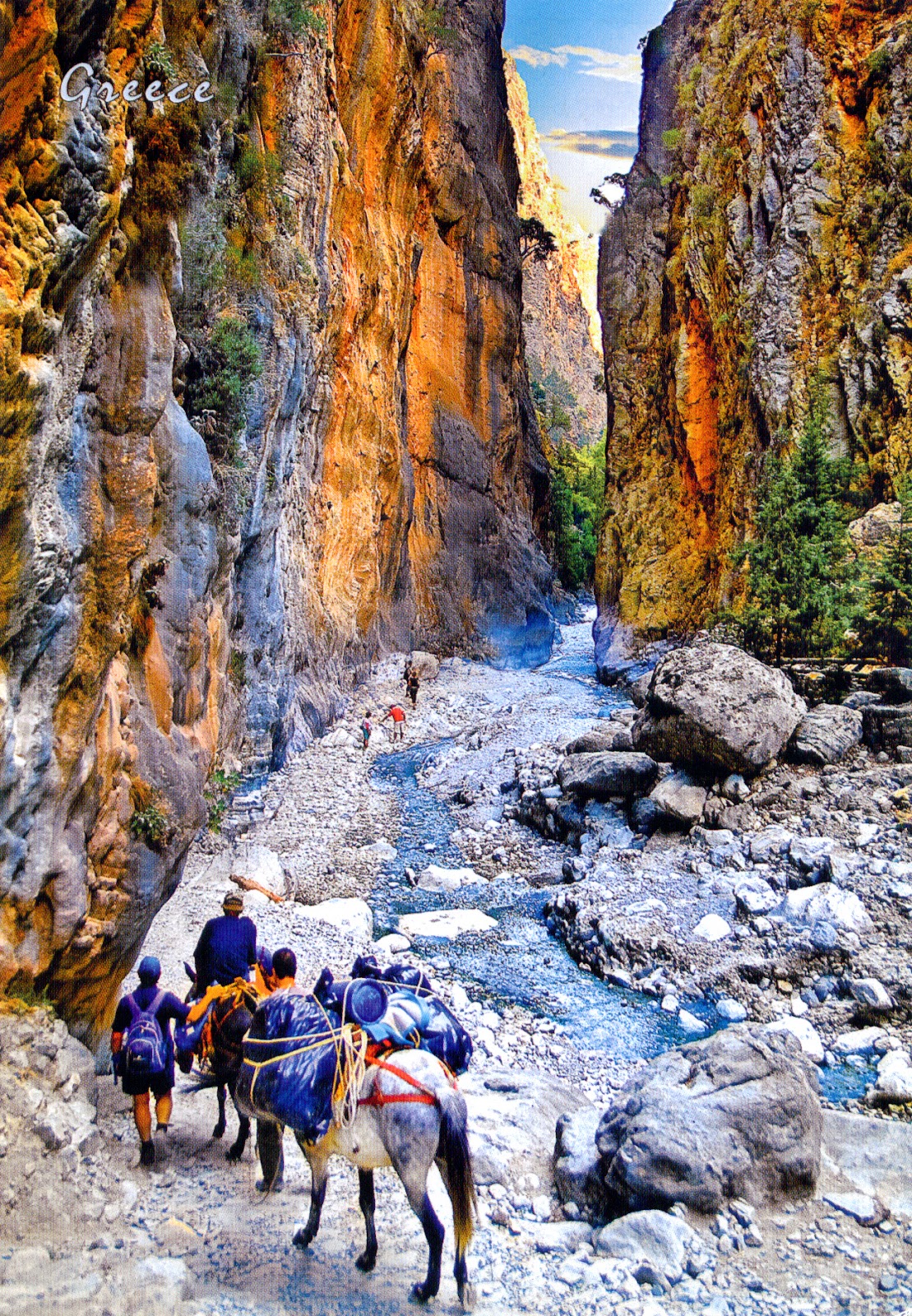Kauai (or Kauaʻi), the oldest and northernmost island in the
Hawaiian chain, the fourth largest of the archipelago, was formed by the passage of the Pacific plate over the Hawaii hotspot, with six million years old ago. Discovered by
Captain James Cook in 1778, it was one of the last islands which joined the
Kingdom of Hawaiʻi, during the reign of
King Kamehameha. Draped in emerald valleys, sharp mountain spires and jagged cliffs, it is justly surnamed the Garden Isle. Kauai's most striking geographic feature is the
Nā Pali Coast State Park (on the first postcard), located in the center of the rugged 26 km along the northwest side of the island. Result of millions of years of wind and water erosion, it stretch southwest starting at Keʻe Beach until the Polihale State Park, and is formed of high cliffs (na pali), which rise until 1.200 m hight along the shoreline, but also of green valleys, towering waterfalls and hidden sea caves. These breathtaking cliffs can only be seen from the sea, by air or by hiking the
Kalalau Trail, which runs 18 km and crossing five major valleys before reaching
Kalalau Beach at the base of Kalalau Valley.
Actually the Nā Pali Coast State Park was formed to protect the
Kalalau Valley (on the second postcard), surrounded by lush cliffs more than 610 m high, and renowned for its natural beauty. The valley bottom is broad and relatively flat, with an accessible region about 3 km long and almost 1 km wide. The abundant sun and rain provides an ideal environment for flora and fauna. Many native Hawaiians lived in the valley into the 20th century, farming taro from a vast complex of terraced fields. Unfortunately these terraced gardens are being threatened and destroyed by the introduced and invasive trees, which created an extensive underground root network which quickly invaded the traditional rock walls of the terraces. The valley is also home to many rare species, including the endangered plant
Dubautia kalalauensis which was named for the valley and is found nowhere else in the world. Other endemics include the endangered
Schiedea attenuata.
To the east of the Nā Pali Coast State Park is the Hono O Nā Pali state Natural Reserve. Hiking trails and hunters roads have access to the sharp ridges from Koke Road in
Waimea Canyon (16 km long and up to 900 m deep - on the third postcard), also known as the Grand Canyon of the Pacific. Waimea is Hawaiian for "reddish water", a reference to the erosion of the canyon's red soil. It has a unique geologic history, because it was formed not only by the steady process of erosion, but also by a catastrophic collapse of the volcano that created Kauaʻi. Roughly 4 million years ago, while Kauaʻi was still erupting, a portion of the island collapsed, forming a depression, which then filled with lava flows. In the time since, rainwater from the slopes of the island's central peak (
Mount Waiʻaleʻale, which is among the wettest places on earth) have eroded Waimea Canyon along one edge of the collapse.
Polihale State Park (on the fourth postcard) is a remote wild beach on the western side of the island, on the south of the Na Pali Coast mountain ridges, and even if is several kilometers long, offers safe swimming only in the area known as Queen's Pond, a shallow pond with a sandy bottom surrounded by a protecting reef, located at the southern end. It is kilometers away from the town of
Kekaha and can only be reached via a poorly marked, dirt sugarcane road. Sand dunes along the beach can reach heights nearing 30 m. South of Queen's Pond is
Barking Sands Beach, also known as Keonekani o Nohili (The Sounding Sands of Nohili). If one walks over the sand here or takes two handfuls of sand in each hand and slaps it together, a sound is produced. This phenomenon occurs due to the formation of the individual sand grains, each of them having small holes in it, and the sound is produced within these small cavities through the vibrations that occur when the sand is pushed together.
Kīlauea Point National Wildlife Refuge (on the fifth postcard) is located on the northwest coast of the island, established in 1985 to preserve and enhance seabird nesting colonies after the property was transferred from the United States Coast Guard. On Kīlauea Point, a narrow, lava peninsula, is located
Kīlauea Lighthouse, dedicated in 1913, and built in a Classical Revival architecture style out of reinforced concrete. The tower is a slightly tapering cylinder about 16 m high. The lens one of only seven second-order Fresnel lenses remaining in a lighthouse in the US. Barbier, Bernard, and Turenne manufactured the lens in Paris, France. The 4,100 kg lens floated on mercury and compressed air, and was rotated by a system of pulleys powered by weights that needed to be reset by an operator every 3.5 hours. A radio beacon was added in 1930, and with the added generator the light was changed to be powered by electricity. The station was manned until 1974 when it was automated. In February 1976 the light was moved to a nearby smaller tower and the tower was sealed.
Read more »

































































.jpg)
+spate.jpg)



